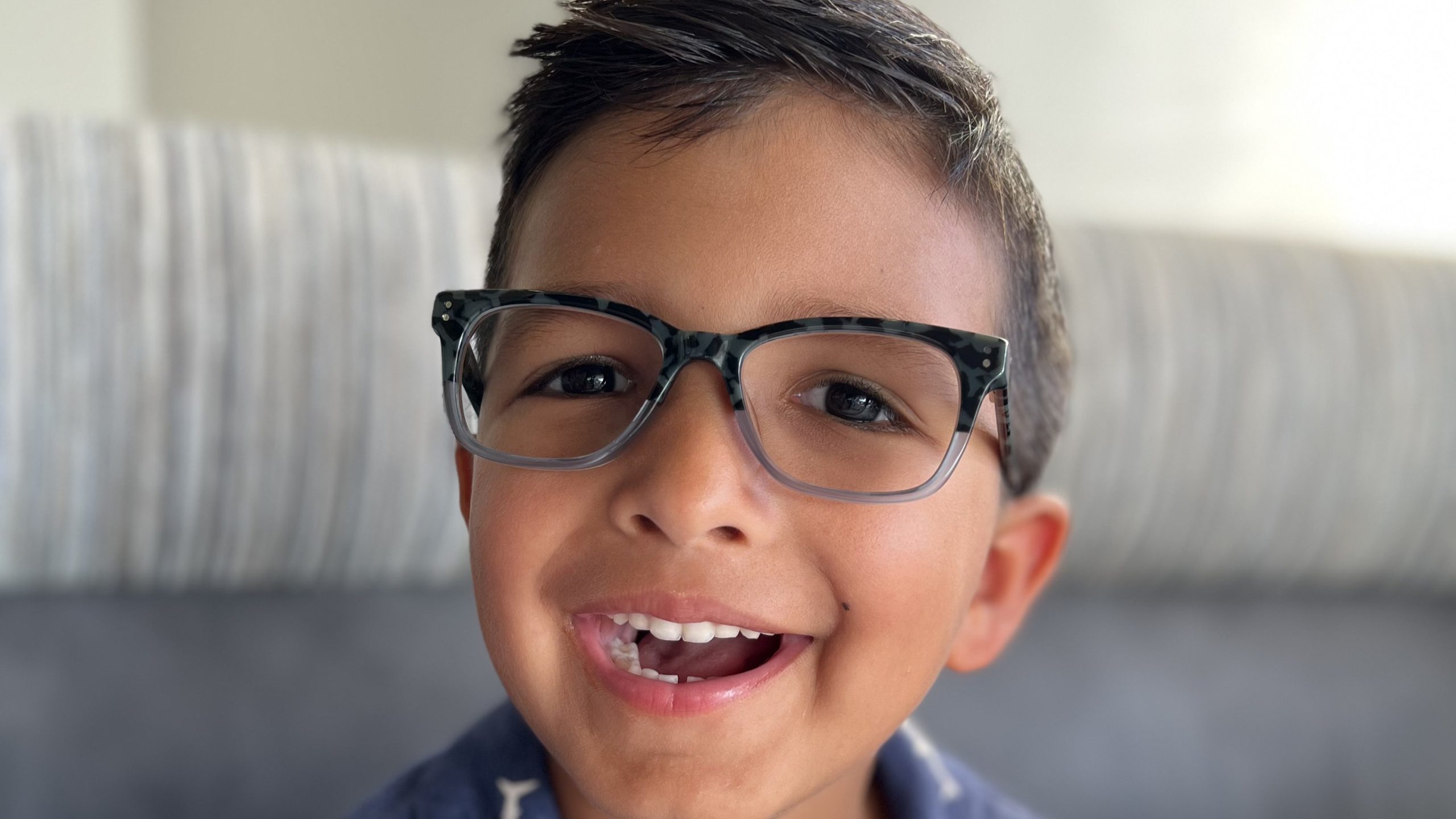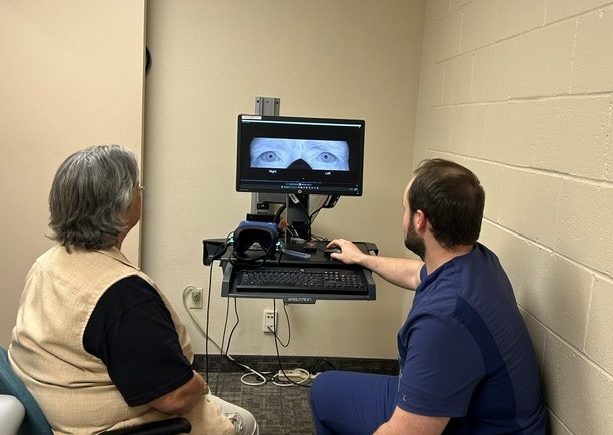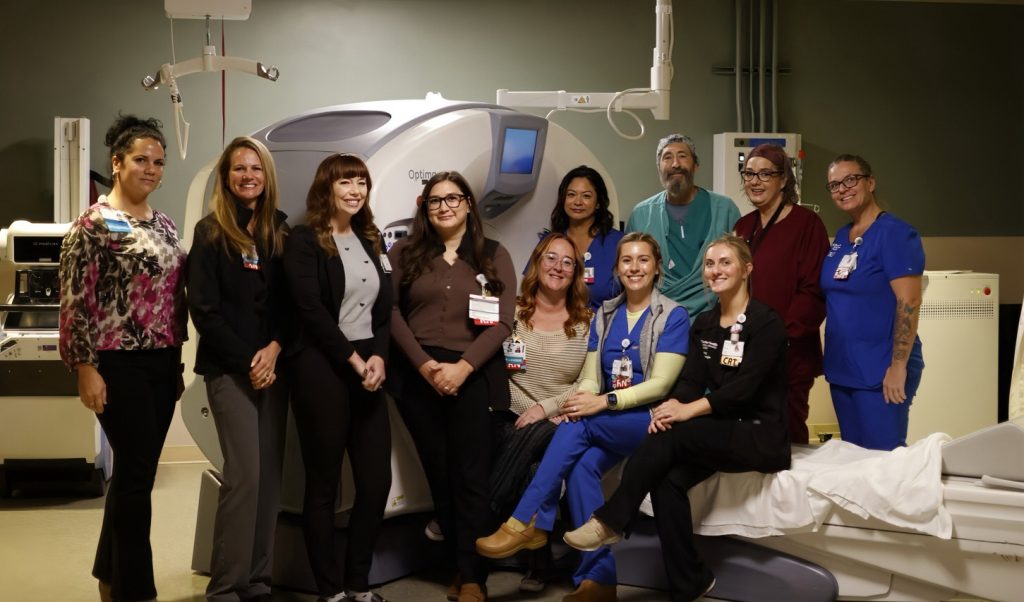By Nicole Young, Vitals contributor
When Ronin Zigler struggled to keep up with his kindergarten classwork, his parents took him to several doctors to have his vision examined. They learned their son was seeing double, but no one could explain why or provide a solution. “We felt lost in the process and afraid of what might happen to our son,” admits Nick Zigler, Ronin’s dad.
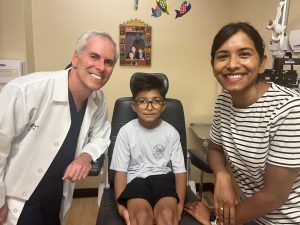
Dr. Mark Silverberg with Ronin Zigler and Natasha Bhushan, Ronin’s mom
The family’s pediatrician recommended Dr. Mark Silverberg, an ophthalmologist at Sansum Clinic, now part of Sutter Health, due to his deep experience and training caring for children. Dr. Silverberg and his team used state-of-the-art equipment and an array of tests to uncover that Ronin has amblyopia, a common vision abnormality sometimes called “lazy eye” which can occur in one or both eyes in babies and young children.
“We can correct the eye problems which cause amblyopia in different ways, but the important thing is that it’s treated right away,” reports Dr. Silverberg. “If not, the risk is permanent, lifelong vision problems.”
According to the American Academy of Ophthalmology, several conditions can cause amblyopia in a child including:
- Eyes pointing in two different directions (strabismus). The brain may start to ignore the unfocused eye, impeding proper vision development.
- Refractive errors like nearsightedness, farsightedness, distorted or blurry vision (astigmatism)
- Cloudiness in the normally clear part of the eye caused by a cataract
- A droopy eyelid
Amblyopia can be corrected using a variety of methods ranging from eye patches and drops, to surgery for more severe cases. It typically takes several weeks to months for the weaker eye to strengthen.
Shortly after his diagnosis by Dr. Silverberg, Ronin began a comprehensive treatment plan that included fitting Ronin with an eye patch for his good eye to make the lazy eye stronger. Ronin also started an FDA-approved therapy called Luminopia which uses virtual reality (VR) goggles. With the headset on, patients watch TV shows where the visuals are manipulated to help strengthen their weaker eye.
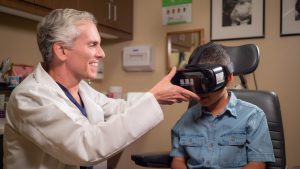
Dr. Silverberg adjusts VR goggles on a patient
Dr. Silverberg monitored Ronin’s progress closely for several months. “Every step of the way, they were communicative, kind and responsive,” shares Zigler. “We followed our son’s treatment program with confidence, not because we knew exactly what the future would hold, but because we knew that Dr. Silverberg and his team were leading us in the right direction.”
Over a year, Ronin moved from borderline legal blindness to nearly 20/20 vision, reaching his 7th birthday with vastly improved eyesight. “Words cannot express our relief,” says Natasha Bhushan, Ronin’s mom. “What Dr. Silverberg and his team have given our child is priceless. We can never repay them for their care, kindness and skill. While our endless gratitude is undoubtedly insufficient, I want them to know that they have it. “
Dr. Silverberg recommends having your child’s vision checked by the time they enter preschool, and if there is a family history of eye conditions or diseases, scheduling an exam with an ophthalmologist.
***The Pacific Coast Business Times named Dr. Mark Silverberg a 2024 Healthcare Champion, recognized for outstanding achievements in advancing the diagnosis and treatment of a wide range of eye conditions.
Note: This content is not intended to be a substitute for professional medical advice, diagnosis or treatment. Always seek the advice of your physician or other qualified health provider with any questions you may have regarding a medical condition. Never disregard professional medical advice or delay in seeking it because of something you have read on this website.

